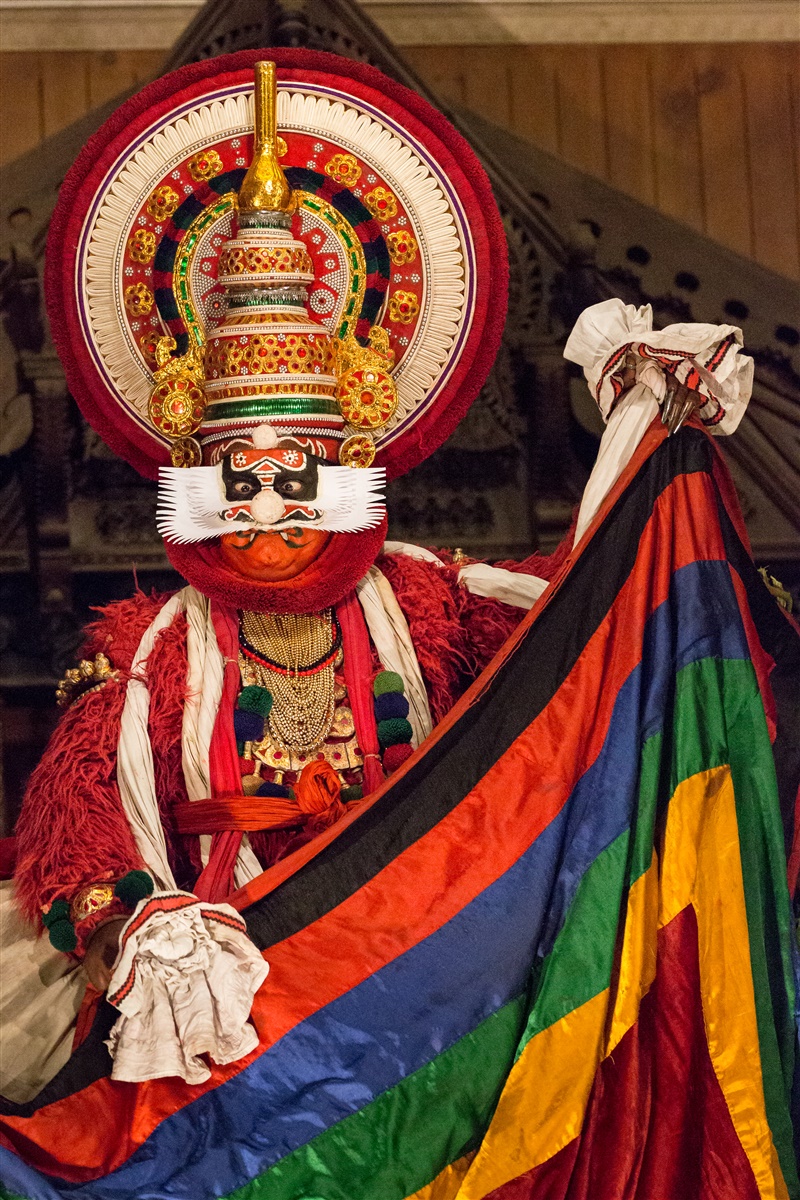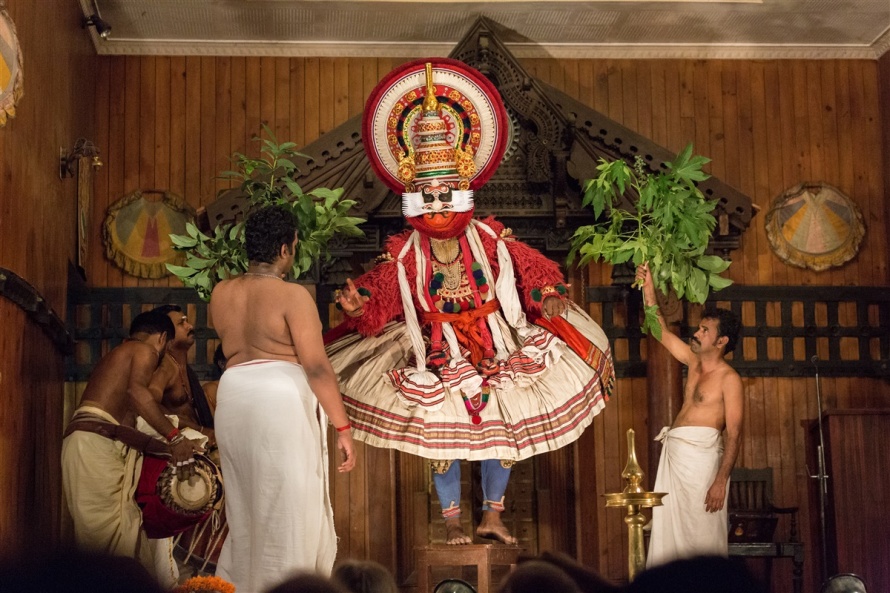
During my short stay in Kochi I was fortunate enough to attend a Kathakali dance performance.
The venue for this was the Kerala Kathakali Centre. Founded in 1990, the center’s aim is to popularize and encourage the classical arts of Kerala, discover new talent, and improve the standards of training and performances by rigorous discipline and dedication.
The evening started in quite an unexpected fashion, as the performers apply their make-up (and there’s a lot of it) on the stage itself in front of the audience.
It was fascinating to watch their faces slowly transformed, and it’s a great build up to the performances themselves.
Elements of the art of Kathakali are found in the ancient ritual plays of Hindu temples and various dance forms that are believed to have been gradually developed in Kerala from as early as the 2nd Century until the end of the 16th Century.
Many of its characteristics are very much older than its literature, as they are a continuation of older traditions, but these did not crystallize until the 17th Century when the Rajah of Kottarakkara, a small principality in central Travancore, wrote plays based on the Hindu epic “Ramayana” in sanskritized Malayam, which could be understood by ordinary people. Before this, the stories were enacted in pure Sanskrit, which was known only to the learned few.
From then on, Kathakali emerged as an individual style of dance-drama into a “people’s theatre” from the traditional dances of the past. The plays were performed by the Rajah’s own company of actors, not only in temples and courts, but from village to village and house to house.
The new art form (called Ramanattam) soon became very popular all over the Malayalam-speaking area. The feudal chieftains of Malabar began to vie with one another in their efforts to produce the best Kathakali troupes, and this competition contributed to the rapid development of the art in a very short period.




A Kathakali performance, like all classical dance arts of India, synthesizes music, vocal performers, choreography and hand and facial gestures together to express ideas. However, Kathakali differs in that it also incorporates movements from ancient Indian martial arts and athletic traditions of South India.
The performances were spell-binding.
Of all classical Indian dances, Kathakali has the most elaborate make-up code, head dress, face masks and vividly painted faces. It typically takes several evening hours to prepare a Kathakali troupe to get ready for a play. Costumes have made Kathakali’s popularity extend beyond adults, with children absorbed by the colors, makeup, light and sound of the performance.



Please ‘Like’ or add a comment if you enjoyed this blog post. If you’d like to be notified of any new content, just sign up by clicking the ‘Follow’ button.
If you’re interested in using any of my photography or articles please get in touch. I’m also available for any freelance work worldwide, my duffel bag is always packed ready to go…
KevinStandage1@googlemail.com
Categories: India, Kathakali Dance, Kerala, Kochi





































Lovely ! Stunning pictures !!
LikeLiked by 1 person
Thanks !
LikeLike
Great images. I shall need to look at the rest of your Kerala trip.
LikeLiked by 1 person
I still have some blogs to do on Kerala, but the summer is here and I am doing a few weeks of Archaology…watch this space… 🙂
LikeLiked by 1 person
Amazing pictures
LikeLiked by 1 person
Thanks !
LikeLike
Wonderful behind-the-scenes photos. Fascinating and well done.
LikeLiked by 1 person